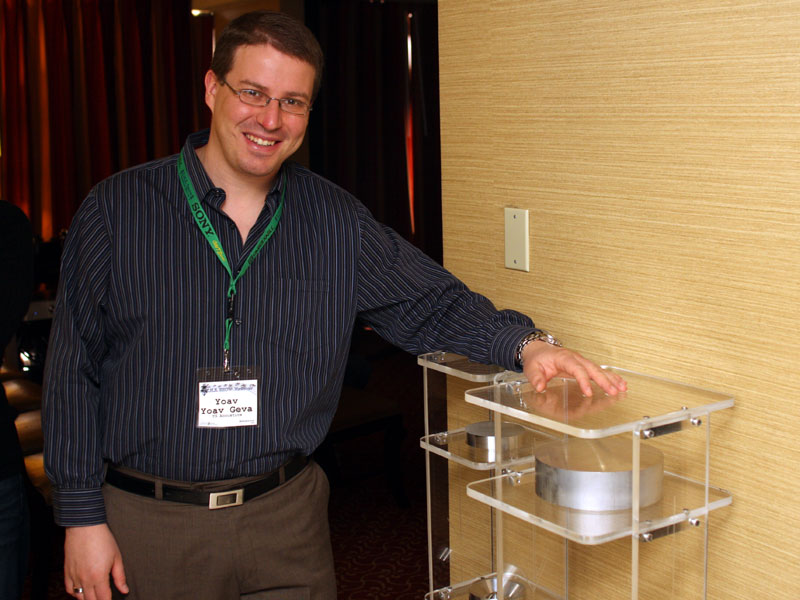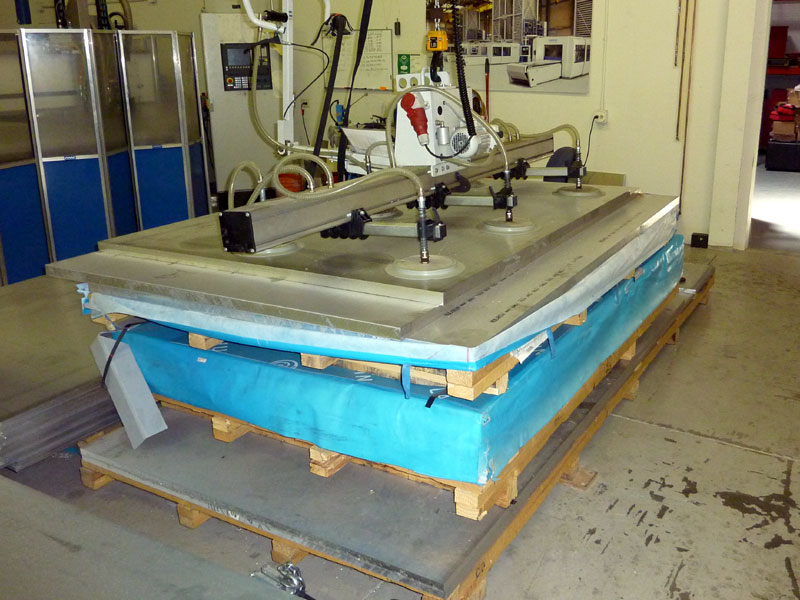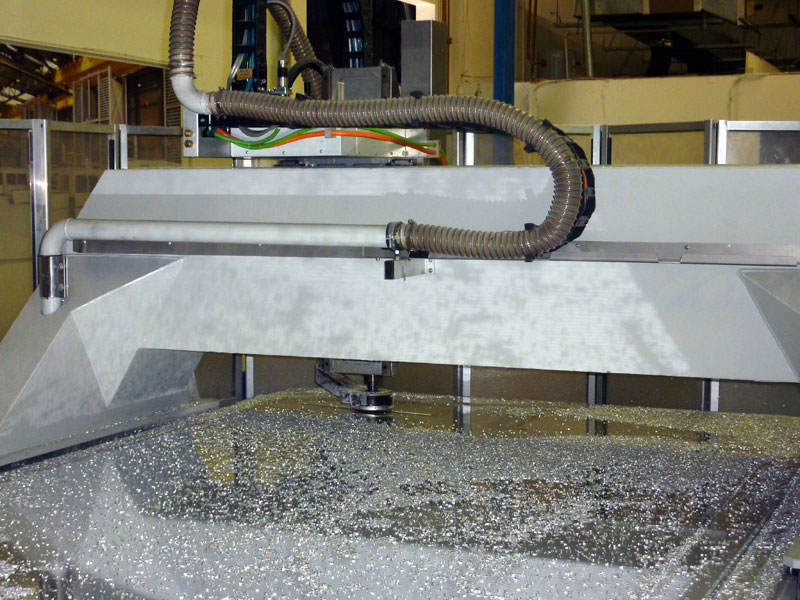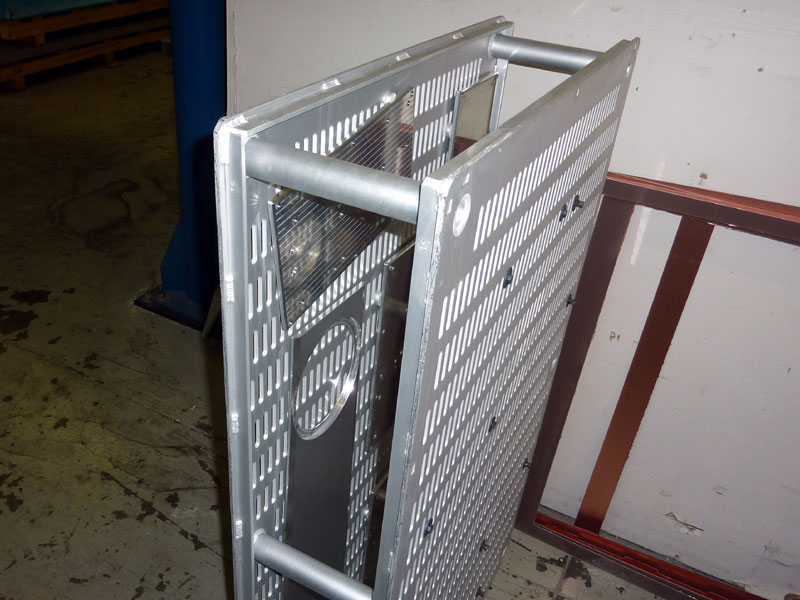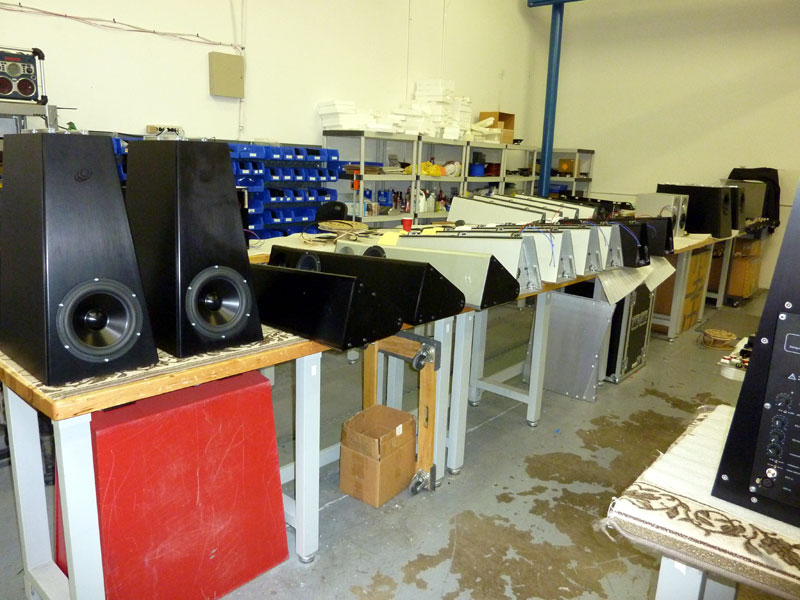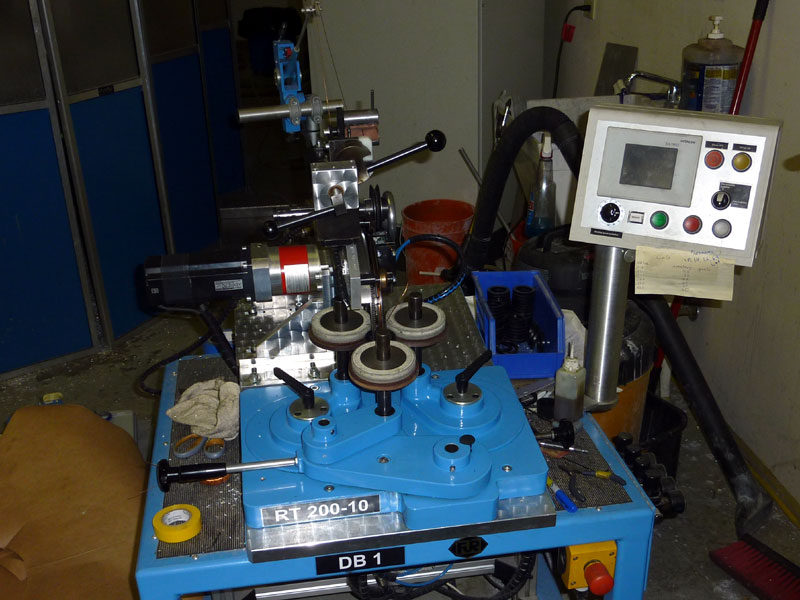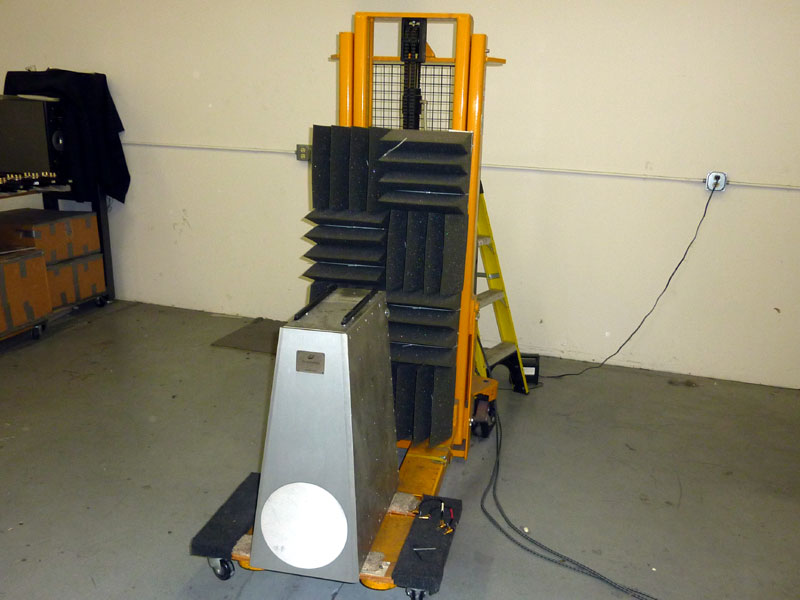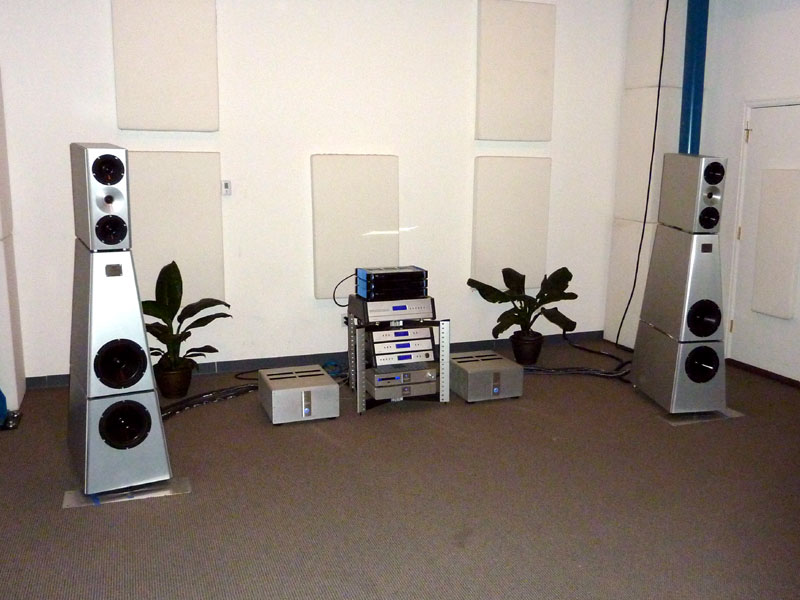YG
Acoustics: The Second Time Around
lmost three and a half years ago, I visited YG Acoustics to write about the company and its manufacturing practices -- a classic "factory tour" article. Because of this visit, I was surprised when, while we chatted at the Newport show, Yoav Geva -- "YG" himself -- said, "We'd really like you to visit again." In the intervening time, I first planned and then built The Audio Beat, so another "factory tour," this time for TAB, made sense. I was concerned, however, that I would be retelling the same story from three years before -- that little would have changed in the meantime. Boy, was I wrong. YG Acoustics has not only grown in size, inhabiting a space 50% larger than it did three years ago, the staff has also grown, as have the company's manufacturing capabilities. Even more speakers are made at the factory and make their way out to audiophiles all over the world. Maximum manufacturing capacity three years ago was 100 pairs of speakers per year. Today, the company makes half that many pairs of Carmels alone, with Kipod and Anat sales escalating at a brisk pace. As if to prove this point, right before I arrived for the second visit, YG sold its demo pair of Anat III Signatures, so listening to them had to happen before the tour -- and before the speakers were packed for shipment to Australia. But I'm getting ahead of myself. The story of YG Acoustics literally begins with its namesake. While living in his native Israel, Yoav Geva wrote code for digital-signal-processing software. A keyboard player from a musical family, he began work on a program to improve the design of loudspeakers, one that optimized the frequency and phase simultaneously. YG Acoustics was founded in Israel, but, with help from outside investment, Yoav and his family moved to Arvada, Colorado, a Denver suburb, in 2004 in order to grow the company, believing that the US was the ideal place to manufacture extreme-fidelity speakers.
Yoav is singular among designers of audio equipment. He has not just done all of the design work for each of the YG speakers, but he is also the in-house technician for the complex and expensive machines the company owns. If for some reason his staff walked out today, he could actually manufacture all of the parts for each speaker and assemble the speakers as well. When I think about this, I shake my head in disbelief, especially after seeing all of the machining that goes into YG Acoustics' cabinets -- not to mention everything that goes into the drivers and crossovers. That Yoav has designed the speakers top to bottom is one kind of accomplishment; that he has mastered the use of all of the machinery needed to manufacture the parts for the speakers is another kind. That he has command of both is amazing. It's reminiscent of a line I saw at a roadside attraction: "We did all this while you were watching TV." The soundtrack playing in my head as I walked around the factory floor was "Powerhouse," the frenetic instrumental that Warner Bros. used as background music in its cartoons whenever the Acme Factory was churning out widgets. There really is a similar kind of energy at YG Acoustics. Slabs of T6061 aluminum come in one door, and finished speakers in their distinctive metal crates leave through another. In between, the aluminum is precisely shaped into cabinet panels, braces, footers, and driver cones, among other necessary parts. Assembly is done with painstaking care and exactitude, and the speakers are measured right in the factory. Product of Arvada
G Acoustics' manufacturing process begins with slabs of aluminum that weigh up to one ton each. A specially made Kontel crane moves them from storage piles to the Poratec large-format CNC mill, a cool $300,000 investment. YG's newest "tool" is a half-million-dollar Gildemeister CNC lathe for milling the bar stock from which spikes and cross-members are made. YG makes these too, not leaving what could be perceived as less important parts to outside vendors. With the aid of its add-on feeder, the Gildemeister lathe can turn out buckets full of spikes while the rest of the factory hums with activity around it.
The CNCs mill the aluminum at 30,000 rpm and also polish each part to a near-mirror surface. Both internal and external parts are finished separately, the former in a machine similar to a rock tumbler and the latter on the company's computerized texturing machine, which gives them the fine uniform grain you see on the cabinets, taking up to 15 minutes per piece, depending on its size. This also hardens the aluminum, making it less susceptible to scratches. Another machine rounds the edges of the baffle, a trickier task because the machine relies on the operator's skill to create pieces with uniform roundness.
After the cabinet parts are milled, they are bolted to racks for anodizing. This is done outside the factory, which leads to great fastidiousness, because YG Acoustics doesn't have complete control over this part of the process. The parts cannot touch on the rack, which will affect the anodization. YG speakers are generally shown in black or silver finish, but others are available, including colors such as blue, maroon and gold. I saw a medium-gray finish during my visit that looked stealthy.
Except for the $18,000-per-pair Carmel, each YG Acoustics speaker is nearly a cabinet inside a cabinet, with the sides and back consisting of two slabs of aircraft-grade aluminum (1/2" and 8mm thick) fastened together. This is done because the resulting panel is stronger and more rigid than a single panel of the same thickness. The front baffles of the speakers are single pieces of ballistic-grade aluminum, which is an alloy that contains a small amount of titanium, making it stiffer than that used for the other cabinet parts. The trickiest part to machine is the waveguide-like plate for the tweeter. The tolerances here are so tight that this looks like an indentation on the baffle. However, this plate is a separate piece that attaches inside the cabinet, giving the illusion that it and the baffle are one.
Assembly of the speakers happens in batches. Instead of adhesives, the inner and outer cabinet pieces are held together with "many, many screws," as Yoav told me during my first visit, each torqued by hand and paired with a star washer. Almost all of the screws are internal in order to give the speakers a sleek look. A pair of Anat Reference Studios require over 4000 fasteners -- screws and washers -- leading to an immense amount of handwork. The only braces within the cabinets are those used to hold the walls together, and there are no damping materials, which Yoav believes also damp the speakers' sound. One interesting thing inside the cabinet is referred to as a "focused eliminator." It's box-shaped and mounts near the bottom of each cabinet. Like all of the parts of YG Acoustics speakers, it was computer designed and optimized for each model. However, it's so critical that I was asked not to photograph it. Every manufacturer making speakers at this level has some sort of proprietary technology they would rather not share with their competition, and the "focused eliminator" is that for YG Acoustics.
New to the manufacturing processes since my last visit (in addition to the milling of spikes and other small parts) are the milling of the circuit boards, the creation of coils for inductors (including the Delrin cores; the winding machine is shown above), and, most significant, the milling of midrange and woofer cones. These, dubbed BilletCore, begin as large pucks of aircraft-grade aluminum that are then machined down to 8/1000ths of an inch, removing 99% of the material. This requires eight hours on the CNC mill for a single woofer -- a huge commitment of time, both human and machine, but one that Yoav believes is vital to the finished product he wants to achieve. He could use stamped aluminum cones, but he is quick to point out that these have microscopic cracks that can equal half the cone's thickness, compromising rigidity. And the surface of the BilletCore cone is smoother and far more uniform, allowing for greater matching of drivers per speaker pair.
After assembly, each speaker is hoisted with a fork lift to a defined height and measured. What's most interesting about this is that it's not done in a separate space. It occurs next to where the speakers are assembled, probably for ease of transport. Lifting the speakers creates conditions not unlike those in an anechoic chamber, because boundaries (and machinery) are not acoustically "visible." The amount of from-the-ground-up manufacturing that happens at YG Acoustics is remarkable for what is a small company. It's possible for a speaker manufacturer to have cabinets and crossovers made offsite, with assembly happening at the factory, but Yoav Geva simply won't accept this. YG Acoustics doesn't make speaker stands or the amplifiers for its powered woofer sections. It also doesn't manufacture certain electrical parts, such as capacitors, or the screws and wire used for its speakers. Instead of taking credit for the creation of parts they clearly do not make, Yoav and his staff are eager to show all that they do make, which is considerable. What I admire most about YG Acoustics as a company is a paraphrase of former Arizona Cardinals coach Dennis Green: They are who we think they are. They reveal and explain what they do without subterfuge. To the music
ow, back to the beginning -- the listening. Anat III Signatures ($119,000 per pair) took pride of place (and wide of place, given their positioning) in the company's new listening room. Electronics were from Krell and dCS, with Kubala-Sosna interconnects, speaker cables and power cords connecting everything. I had my collection of CD-R show samplers with me, as they have cuts I've heard on dozens of different systems. I chose most tracks for what they tell me about the sound, and I often play ones that lean too far one way or the other in order to determine if and how they exacerbate or balance a system's own sonic deficiencies and excesses.
I found the earliest YG Acoustics speakers to sound too cool and detached for my tastes, like so much Scandinavian jazz, where the intellect is indulged over and above emotions. But I've warmed a bit to each successive model, culminating with the Anat III Signature, which represented the first time I've heard YG's BilletCore drivers at length. YG speakers have always been high-rez, wide-bandwidth designs, and so it was with the Anat III Signature, which revealed tons of musically important information and had a special way with hall ambience. But more significant was the effect of the BilletCore drivers, which, for all their technical advantages, made for a more natural-sounding presentation, one whose first and best trick was not merely sounding detailed. The palette of tonal colors was immense, which helped to differentiate voices especially well. I could name cut after cut here, but it's easier to say that they all sounded realistic and, moreover, human. YG Acoustics is committed to upgradeability, so owners of
earlier speakers can have them upgraded to current specs and parts, including the
BilletCore drivers, something I would urge them to do without delay. What I plan to do
without delay is talk with the YG crew about getting a pair of speakers in my listening
room to write about. After two visits to the factory, this seems like the logical next
step. |

